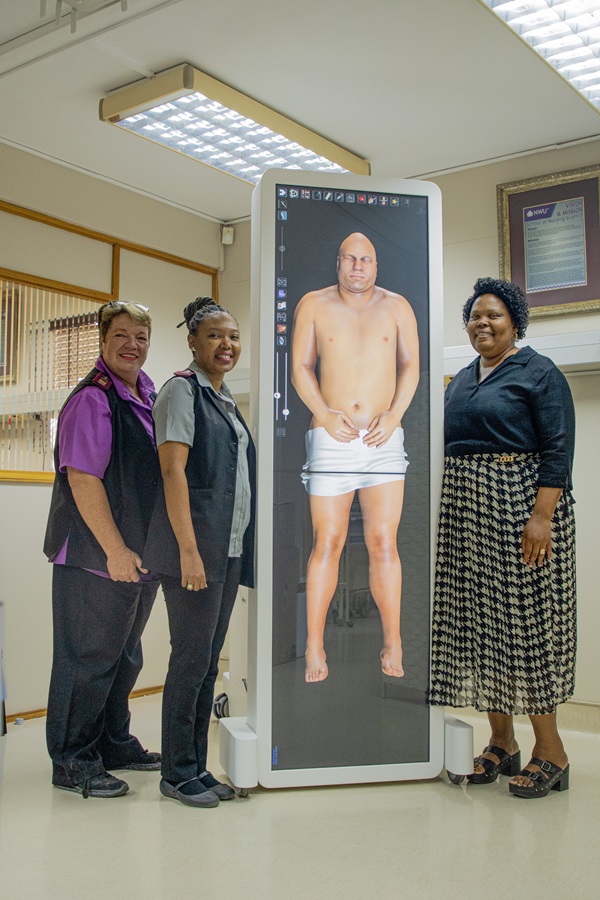The School of Nursing at the Potchefstroom Campus of the North-West University (NWU) is keeping up with the rapidly evolving technological landscape. Anatomy and physiology education have been completely revolutionised by the recently introduced anatomage table, which visualises anatomy as it would appear on a fresh cadaver. This initiative is evidence that the NWU is continuing to put its students first.
An anatomage table is a 3D visualisation tool that allows users to see and interact with detailed human cadaver images. The cadavers are fixed in a specialised gel solution, and this allows for high-definition thin-slice computer tomography (CT) imaging.
The table explores a variety of educational concepts, namely anatomy and dissection, physiology, and clinical case library, and it offers students and professionals in the health sciences area practical learning opportunities. The nervous system, cardiac system, joint mobility, and kinesiology are among the physiological processes that can be explored on the table.
Dr Khumo Shopo, the deputy director at the School of Nursing at the Potchefstroom Campus of the NWU, supports this endeavour, which was initiated by her predecessor, Dr Elsabe Bornman. “The anatomage table is beneficial for the students. It is expensive, but we believe it provides value for money. Before commencing their practical’s, students can experience labour and delivery processes in an unusual way, thanks to the functionalities of the table, which is a positive contribution to teaching and learning.”
Dr Shopo reflected on her time as a student and said she was not so fortunate as to have had access to such an amazing resource and advises the students to make use of the table and learn as much from it as possible.
In her support, Mrs Erita Koekemoer, the clinical preceptor and simlab coordinator at the simulation laboratory of the School of Nursing at the NWU Potchefstroom Campus, said: “The table is user-friendly, and the students enjoy interacting with it. With this table the students are able to view objects from the top and bottom. It is fun to use, and it feels like a large phone.”
Dr Shopo stated that the Mahikeng Campus will soon be welcoming the anatomage table, which is currently used only on the Potchefstroom Campus.
Running like clockwork
The anatomage table allows the user to dissect a complete human cadaver. There are five distinct cadavers on the table: two are male and female Caucasians, two are male and female Asians and one is a pregnant woman.
Users have the ability to move the cadavers in any orientation, zooming in and rotating, going layer by layer, and opening different structures.
In addition, users can also simulate surgical procedures, practise visualising medical interventions, and imitate pathological conditions in a risk-free virtual setting. This enhances clinical skills and decision-making abilities without posing any harm to patients.

From the left are Mrs Erita Koekemoer, Dr Nicholin Scheepers-Makjoweni, a clinical programme leader and senior lecturer at the Potchefstroom Campus School of Nursing, and Dr Khumo Shopo.
This is the labour and the delivery process highlighted on the cutting-edge visualisation tool
